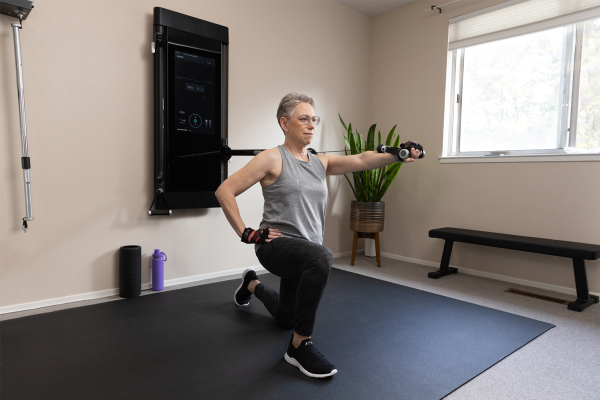Inside the Democratization of Strength Training

Strength training is increasingly becoming a focal point for consumers across all ages and fitness levels, Tonal reports
The wide-ranging health and mental benefits of strength training are increasingly being recognized by individuals of all ages and genders, according to a new report from smart home fitness company Tonal.
The findings, which leverage a year’s worth of Tonal’s anonymized user data, show that users of the AI-powered strength training hardware lifted over 66 billion pounds in 10 million-plus workouts between October 2022 and 2023— serious numbers showing just how invested consumers are in building strength.
Strength Training Leads the Way in 2024
With a new year underway, strength training remains a major focus of fitness consumers, as seen by a Mindbody 2024 Predictions Report revealing that over 60% of consumers include weight or strength training in their workout routines.
Nike even launched a collection of strength training equipment with branded barbells, dumbbells and kettlebells — a first in its 50-plus year history — further underscoring the fitness trend. Boutique fitness brands such as Orangetheory are also tapping into strength training to meet consumer demand.
Breaking Old Stereotypes
Although strength training was once a fitness segment primarily cornered by male athletes and appeared intimidating to the average fitness enthusiast, Tonal reports that fitness consumers of all ages and levels are using strength training to build muscle, becoming stronger and healthier.
In particular, women and adults over 55 years old are actively “lifting heavy” and shattering the image of what a weightlifter looks like, according to Tonal.
Despite the availability of various workout options (such as yoga, barre, HIIT, Pilates and dance cardio), Tonal reports women opt for strength-training workouts 62 percent of the time on its home gym hardware. Their workouts have paid off — in their first year on Tonal, women users increased their overall strength by an average of 57 percent.

Older Tonal users are also invested in resistance training to build muscle, promote joint health, and preserve bone mineral density, eager to work on functional movement to improve their daily life and participation in recreational sports. This active segment of Tonal users is also 12 percent more consistent in their routines when compared to younger Tonal members. The smart home gym maker has been targeting older adults with its ‘Active Aging’ strength workouts, noting that its 55-plus segment is one of its most “vibrant populations.”
The Impact of Weight Loss Drugs, AI
While Tonal is encouraged by its data findings, the smart home gym company acknowledges new opportunities and challenges ahead for the fitness industry, such as AI and GLP-1 weight loss drugs.
The weight-loss promises of GLP-1s may be accurate, but these drugs won’t replace exercise, predicts Tonal. Instead, the use of popular medications such as Ozempic and Wegovy will underscore the importance of a consistent resistance training routine, especially as many experts warn that rapid weight loss can result in the loss of lean muscle mass.
By integrating resistance training with weight loss drugs, patients will have a greater chance at long-term success, according to Troy Taylor, senior director of performance at Tonal.
As for AI, Tonal is confident in the technology’s ability to help, not replace, the fitness industry.
“While AI won’t replace personal trainers anytime soon, it will serve as a valuable resource for creating programming and freeing up coaches to focus on the human elements of training that can’t be replicated by a machine,” said Tonal coach Ash Wilking.
View Tonal’s 2023 State of Strength Report here.



